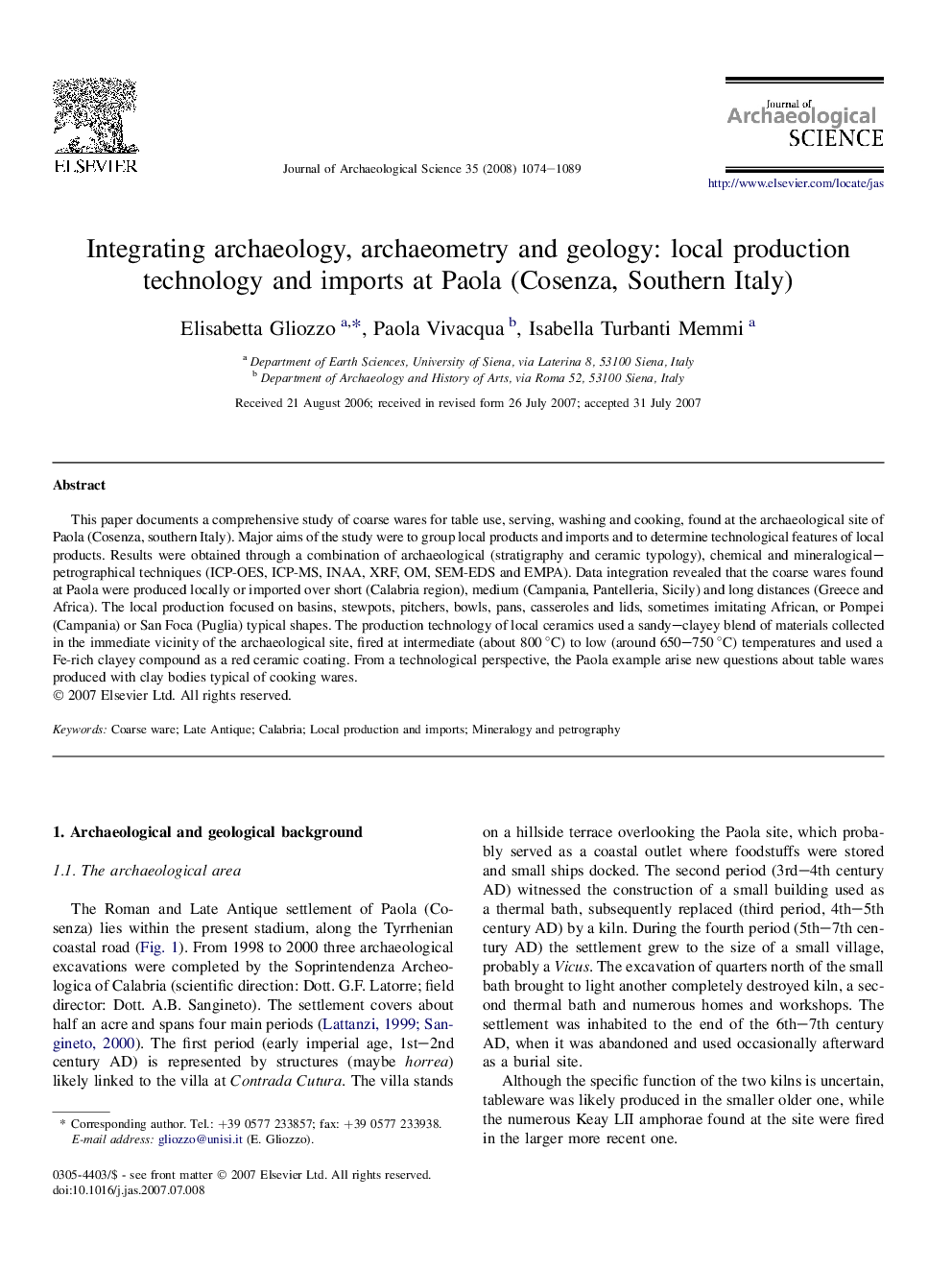| Article ID | Journal | Published Year | Pages | File Type |
|---|---|---|---|---|
| 1037463 | Journal of Archaeological Science | 2008 | 16 Pages |
This paper documents a comprehensive study of coarse wares for table use, serving, washing and cooking, found at the archaeological site of Paola (Cosenza, southern Italy). Major aims of the study were to group local products and imports and to determine technological features of local products. Results were obtained through a combination of archaeological (stratigraphy and ceramic typology), chemical and mineralogical–petrographical techniques (ICP-OES, ICP-MS, INAA, XRF, OM, SEM-EDS and EMPA). Data integration revealed that the coarse wares found at Paola were produced locally or imported over short (Calabria region), medium (Campania, Pantelleria, Sicily) and long distances (Greece and Africa). The local production focused on basins, stewpots, pitchers, bowls, pans, casseroles and lids, sometimes imitating African, or Pompei (Campania) or San Foca (Puglia) typical shapes. The production technology of local ceramics used a sandy–clayey blend of materials collected in the immediate vicinity of the archaeological site, fired at intermediate (about 800 °C) to low (around 650–750 °C) temperatures and used a Fe-rich clayey compound as a red ceramic coating. From a technological perspective, the Paola example arise new questions about table wares produced with clay bodies typical of cooking wares.
